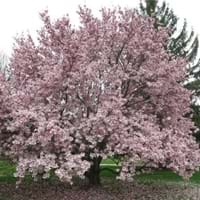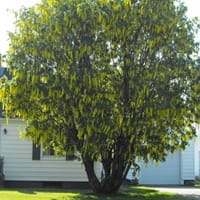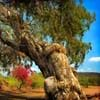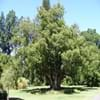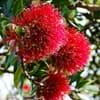Life Span
Perennial
Perennial
Origin
Europe, Hybrid origin
Brazil
Types
Grace McDade, Jurmag1
Not available
Number of Varieties
Not Available
Habitat
Not Available
Shady Edge, Woodland Garden Dappled Shade
USDA Hardiness Zone
4-9
11-15
Sunset Zone
3b, 4, 5, 6, 7, 8, 9, 14, 15, 16, 17, 18, 19, 20, 21, 22, 23, 24
H1, H2, 23, 24
Habit
Oval or Rounded
Upright/Erect
Flower Color
Pink, Violet
Yellow, Lemon yellow
Flower Color Modifier
Bicolor
Bicolor
Fruit Color
Red
Gray Green
Leaf Color in Spring
Light Green
Green
Leaf Color in Summer
Green
Green
Leaf Color in Fall
Yellow, Yellow green
Green
Leaf Color in Winter
Not Available
Green
Leaf Shape
Oblong
Compound
Plant Season
Spring
Spring, Summer, Fall
Sunlight
Full Sun, Partial Sun
Full Sun, Partial Sun, Partial shade
Type of Soil
Clay, Loam, Sand
Loam
The pH of Soil
Acidic, Neutral
Acidic, Neutral
Soil Drainage
Well drained
Average
Bloom Time
Spring
Summer, Late Summer
Tolerances
Not Available
Drought
Where to Plant?
Ground
Ground
How to Plant?
Seedlings, Stem Cutting
Budding, Grafting, root cutting, Seedlings
Plant Maintenance
Medium
Medium
Watering Requirements
Requires regular watering
Average Water Needs, Do Not over Water, Keep the Soil well drained, Requires more often in extreme heat, Requires regular watering
In Summer
Lots of watering
Lots of watering
In Spring
Moderate
Moderate
In Winter
Average Water
Average Water
Soil pH
Acidic, Neutral
Acidic, Neutral
Soil Type
Clay, Loam, Sand
Loam
Soil Drainage Capacity
Well drained
Average
Sun Exposure
Full Sun, Partial Sun
Full Sun, Partial Sun, Partial shade
Pruning
Remove all suckers, Remove damaged leaves, Remove dead or diseased plant parts
Remove damaged leaves, Remove dead branches, Remove dead leaves
Fertilizers
Fertilize in late fall, Requires high amount of nitrogen
All-Purpose Liquid Fertilizer
Pests and Diseases
Bacterial leaf spot, Canker, Leaf spot, Scale, Spot anthracnose, Thripes, Verticillium Wilt
Canker, Caterpillars, Root Pathogen
Plant Tolerance
Not Available
Drought
Flower Petal Number
Single
Single
Foliage Texture
Coarse
Coarse
Foliage Sheen
Matte
Glossy
Attracts
Birds
Butterflies
Allergy
Asthma
allergic reaction, poisonous if ingested, Skin irritation
Aesthetic Uses
Cottage Garden, Showy Purposes
Formal Garden, Used in parkland
Beauty Benefits
Perfumes, Skin cleanser
Not Available
Environmental Uses
Air purification, Fixes Nitrogen, Shadow Tree
Air purification
Medicinal Uses
No Medicinal Use
Vomiting
Part of Plant Used
Whole plant
Seeds
Other Uses
Used as Ornamental plant
Pesticide, Used as Ornamental plant, Wood is used for making furniture
Used As Indoor Plant
No
No
Used As Outdoor Plant
Yes
Yes
Garden Design
Feature Plant, Shade Trees, Street Trees
Feature Plant, Shade Trees, Tropical
Botanical Name
Magnolia × soulangeana
LOPHANTHERA lactescens
Common Name
saucer magnolia
Golden Chain Tree
In Hindi
saucer magnolia
Laburnum
In German
saucer magnolia
Goldregen (Pflanze)
In French
saucer magnolia
Laburnum
In Spanish
saucer magnolia
Laburnum
In Greek
saucer magnolia
Laburnum
In Portuguese
saucer magnolia
Laburnum
In Polish
saucer magnolia
Złotokap
In Latin
saucer magnolia
Laburnum
Phylum
Magnoliophyta
Tracheophyta
Class
Magnoliopsida
Magnoliopsida
Order
Not Available
Fabales
Family
Magnoliaceae
Fabaceae
Clade
Angiosperms
Angiosperms, Eudicots, Rosids
Tribe
Not Available
Not Available
Subfamily
Not Available
Faboideae
Number of Species
Not Available
Properties of Saucer Magnolia and Golden Chain Tree
Wondering what are the properties of Saucer Magnolia and Golden Chain Tree? We provide you with everything About Saucer Magnolia and Golden Chain Tree. Saucer Magnolia doesn't have thorns and Golden Chain Tree doesn't have thorns. Also Saucer Magnolia does not have fragrant flowers. Saucer Magnolia has allergic reactions like Asthma and Golden Chain Tree has allergic reactions like Asthma. Compare all the properties and characteristics of these two plants. Find out which of these plant can be used as indoor plant. If you are interested to decorate your house and garden, find out aesthetic uses, compare them and select the plant which will beautify your surrounding. Along with beautification, try comparing medicinal and edible uses of Saucer Magnolia and Golden Chain Tree and you can choose the plant having best and most benefits.
Season and Care of Saucer Magnolia and Golden Chain Tree
Season and care of Saucer Magnolia and Golden Chain Tree is important to know. While considering everything about Saucer Magnolia and Golden Chain Tree Care, growing season is an essential factor. Saucer Magnolia season is Spring and Golden Chain Tree season is Spring. The type of soil for Saucer Magnolia is Clay, Loam, Sand and for Golden Chain Tree is Loam while the PH of soil for Saucer Magnolia is Acidic, Neutral and for Golden Chain Tree is Acidic, Neutral.
Saucer Magnolia and Golden Chain Tree Physical Information
Saucer Magnolia and Golden Chain Tree physical information is very important for comparison. Saucer Magnolia height is 1,070.00 cm and width 610.00 cm whereas Golden Chain Tree height is 1,520.00 cm and width 460.00 cm. The color specification of Saucer Magnolia and Golden Chain Tree are as follows:
Saucer Magnolia flower color: Pink and Violet
Saucer Magnolia leaf color: Light Green
Golden Chain Tree flower color: Yellow and Lemon yellow
- Golden Chain Tree leaf color: Green
Care of Saucer Magnolia and Golden Chain Tree
Care of Saucer Magnolia and Golden Chain Tree include pruning, fertilizers, watering etc. Saucer Magnolia pruning is done Remove all suckers, Remove damaged leaves and Remove dead or diseased plant parts and Golden Chain Tree pruning is done Remove damaged leaves, Remove dead branches and Remove dead leaves. In summer Saucer Magnolia needs Lots of watering and in winter, it needs Average Water. Whereas, in summer Golden Chain Tree needs Lots of watering and in winter, it needs Average Water.
